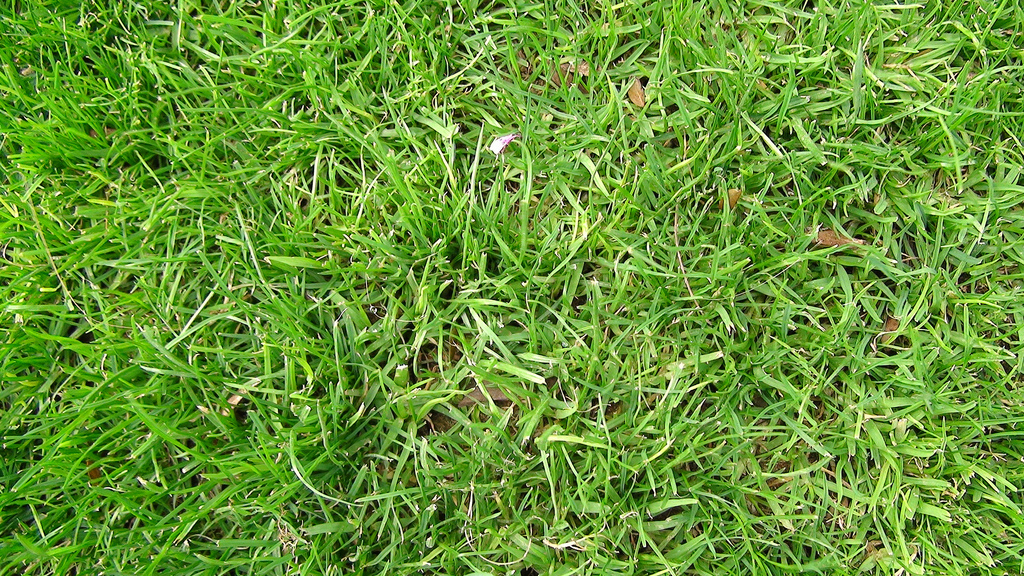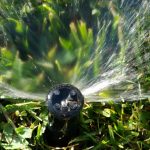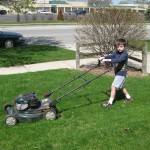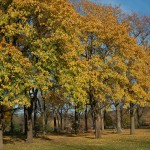
How you care for your lawn (and anything green that grows in your yard for that matter) can have a significant impact on how much waste your home produces, and on Minneapolis’ air and water quality.
Each weekend, about 54 million Americans mow their lawns, using 800 million gallons of gas per year and producing tons of air pollutants; such as carbon monoxide, volatile organic compounds, and nitrogen oxides. And according to EPA statistics, gas mowers represents 5% of U.S. air pollution.
There’s also water waste management and chemical fertilizer runoff to consider.
The problem is that it’s so difficult to track exactly how much waste and pollution the average American household produces. That’s why we put together a list of eco-friendly lawn care tips to help reduce your carbon footprint while without having to compensate the quality of your lawn.
Your lawn and garden’s effect on the environment
Photo: Flickr / Martin Cathrae
Your lawn and garden can contribute a large portion of what your household needs to discard and recycle. Yard waste and food waste make up 13% of what’s thrown into the garbage in Minneapolis. On average, homeowners nationwide use ten times more chemical fertilizers and pesticides per acre than farmers use on farmland.
Irresponsible lawn watering wastes large amounts of water. Gasoline-powered mowers, weed cutters, leaf blowers and other devices make noise and pollute the air. Powered by a two-cycle engine, a lawn mower in one hour spews the same amount of exhaust as a car driven 350 miles.
However, there are ways lawns can be maintained that produce less waste. A healthy, well-maintained lawn is naturally resistant of weeds and pests. The truth is, you don’t need a lot of chemicals to keep your lawn lush and green. There are specific warning signs and indications for spotting a lawn that’s actually in need of extra watering.
We recommend solving your lawn problems with smarter maintenance rather than relying on heavy use of pesticides and herbicides.
Mow, fertilize, and rake responsibly
There are certain tricks of the trade when it comes to basic lawn care that can significantly reduce the amount of time that you spend on your lawn, while also fostering healthy growth. Mowing, watering, fertilizing, and raking responsibly very well may be your golden ticket to a healthy, environmentally friendly lawn.
Mow your grass at the recommended height (usually 2 ½ to 3 inches). This is lawn care 101, and probably the single most important tip to maintaining a healthy lawn. By raising that mower blade a little higher and mowing at the recommended height, the grass will have a better established root system that’s also more drought resistant. Taller grass helps shade the soil surface, making it easier for grass to outcompete weeds. Read more about Minneapolis grass types in one of our other blog posts.
Sharpen the mower blade at the end of each season to ensure clean cuts. Dull mower blades actually rip and tear the grass making it more susceptible to disease, as opposed to a clean and healthy cut.
Recycle the grass clippings back into the lawn – also called grasscycling. As a natural source of nitrogen, grass clippings can provide the equivalent of about one application of fertilizer per year. Also, make sure to blow (or sweep) away grass clippings from all hard surfaces to avoid polluting nearby lakes or streams.
Test your soil at least once every three years to determine the appropriate mix of fertilizers for your lawn. Contact your local extension office for a soil test.
Read our lawn watering tips post to help you reduce outdoor water waste while actually making your grass healthier.
Aerate your lawn to combat soil compaction and thatch build-up. Aeration is a process which involves perforating the lawn with tiny holes by removing plugs of soil from the surface of the lawn. Leave the plugs to decompose naturally, contributing to a decrease in thatch, while the holes poked into the ground help improve soil aeration for healthier root systems. Ultimately increasing the amount of water, air, and nutrients made available to the root system.
Use weeds as health indicators. Weeds can give you hints for what’s wrong with your lawn.
For example, dandelions may indicate that the grass is too thin. Whereas plantain may indicate the soil is compacted or poorly drained.
Lawn mower alternatives
As previously mentioned, gas-powered mowers contribute 5% of U.S. air pollution. There are stats that indicate an hour of mowing with a gas-powered mower is equivalent to driving a car for 45 miles. While others say an hour of mowing emits as much air pollution as 11 new cars each being driven for one hour. There’s the noise pollution to consider as well.
Photo: Flickr / imelda
Electric lawn mowers are exponentially more eco-friendly than their gas-powered counterparts. The benefits include reduced noise pollution, no gas or oil consumption, green energy, cost savings, and some people suggest that they’re easier to use.
Push mowers, also called reel mowers, are lightweight and easy to store. And because this isn’t the 1950s anymore, many of the newer models are designed to be more efficient to use.
The right time to apply
Weed control. September is prime to time to treat for dandelions, plantain, creeping Charlie, and other perennial broadleaf weeds. Also, keep in mind that the best weed defense is a properly maintained lawn.
Seed. The best time to sow fresh seed is in the fall. This allows the grass seed time to establish itself while temperatures are more mild. However, if you sow seed in the fall be careful not to spread pre emergent. Not only will this eliminate weed growth but will also kill off the seed, preventing it from germinating.
Fall fertilizer. Between September and November is the best time to apply fertilizer for your lawn. This helps promote healthy spring growth.
Topdressing. Topdressing your lawn will create more nutrient-rich soil while reducing your lawn’s water dependency and make it more resistant to drought and disease. This also allows you to fertilize less often and serves as a great combination with aeration.
Have questions about lawn care? Visit our Minneapolis lawn care page or share your thoughts in the comments section below.







